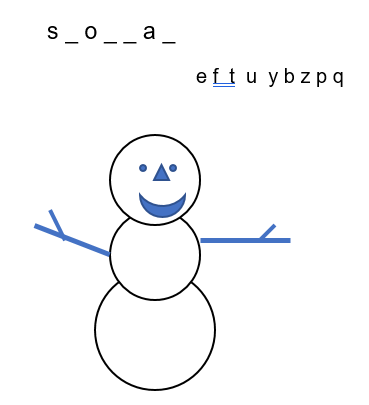10 practical activities to help students with spelling
Stacey Holliday Hughes shares 10 practical activities to help students with spelling in the second of two blogs on the topic of spelling. You can read the first blog, '10 ways to help your students notice and internalise spelling' here.
Nothing is more demotivating to many students than copying a word over and over. In fact, this method only works for some students, yet it seems to be a teacher’s favourite. I advocate giving students a range of options and letting them choose the one that they feel helps them the most. Multimodal activities – those involving seeing, hearing and movement – are most effective. It also works better if spelling a word is revisited a little and often over time rather than trying to learn intensively. Activities 1-3 are good for self-study. Activities 4-5 are designed for pairs and activities 6-10 work well in groups.
1. Quizlet and study sets of words
Choose some words that students have difficulty spelling and make a study set of them using the online tool www.quizlet.com. Quizlet is an online flashcard making app that has multiple uses for classroom and self-study. You can make study sets for students to access at home, or the sets can be used in the classroom for whole-class revision. On one side of the card, type the word; on the other create a recording of the word. The student listens, then says and writes the word.
2. Using Scrabble letters
Most of your students will have heard of the game Scrabble which comes with lots of letters on small plastic squares. (If they don’t have the game at home, then they can make a set of letters on small pieces of paper.) The student creates an audio recording of all the words s/he wants or needs to learn. Next, s/he plays one word at a time, and uses Scrabble letters to spell them out, checking after each.
3. Look, say, cover, write, check
This is a well-known self-study method. The student looks at the word, says it aloud, covers the word, writes it and then checks.
4. Test your partner
One student says the word (from a list or using a vocabulary card set) and the other writes it down. Then they swap roles and repeat the activity.
5. Snowman
Play ‘snowman’ (a less gruesome version of hangman’). One student chooses a word, counts the number of letters in the word and draws that number of blanks on a piece of paper. The other student guesses a letter. If the letter is in the word, student A writes it in (as many times as it appears). If not, student A draws the bottom of the snowman (a big circle). This continues until the snowman has a body, head, face and arms (9 wrong guesses) at which point, the student ‘loses’. They swap roles and repeat.
6. Disappearing letters
Write the word on the board. Students spell the word in chorus as you point to the letters. Erase one of the letters and put a line where the letter was. Point to the letters again (including the space) as the students spell in chorus. Continue to erase letters until they are spelling the word from memory.

7. Which is correct?
Write up a number of words on the board which you have been teaching recently. Spell half of them incorrectly. Tell students to work in teams of three or four and to try and spot which words are spelled correctly and which are incorrect.
8. Missing letters
Write the vocabulary words or set of words on the board, but leave out all the vowels. The first time you do this, leave a space where the vowel should go. The next time, don’t leave a space. Students work in pairs to reconstruct the words.
9. Team spelling bee
This is a good revision game just before a test. Put students into groups of 3. Have the words on cards at the front of the room. One person from each team comes up to look at the word, then goes back to the team to say what it is. They can come up as many times as they need to see the word, but can’t take the word back with them. The team with the most correctly spelled words after a certain amount of time wins.
10. Whisper spelling
Put students into teams of 6-10. They stand in rows in their team facing the board. You are at the back of the lines. The person at the back of each line sees or hears the word from you, whispers it to the person in front and so on until the word reaches the person nearest the board. That person writes the word, then joins the line at the back. This is repeated until everyone in each team gets a chance to write a word on the board. Students in a team can orally help the teammate writing the word, but they cannot approach the board to write.
Stacey H. Hughes is a freelance teacher trainer, educational materials writer and teacher. She has an MA in Applied Linguistics and TESOL and has taught in in Poland, Italy, the UK and the US. Stacey gives talks and workshops around the world – both face-to-face and via webinar.
Comments
Write a Comment
Comment Submitted